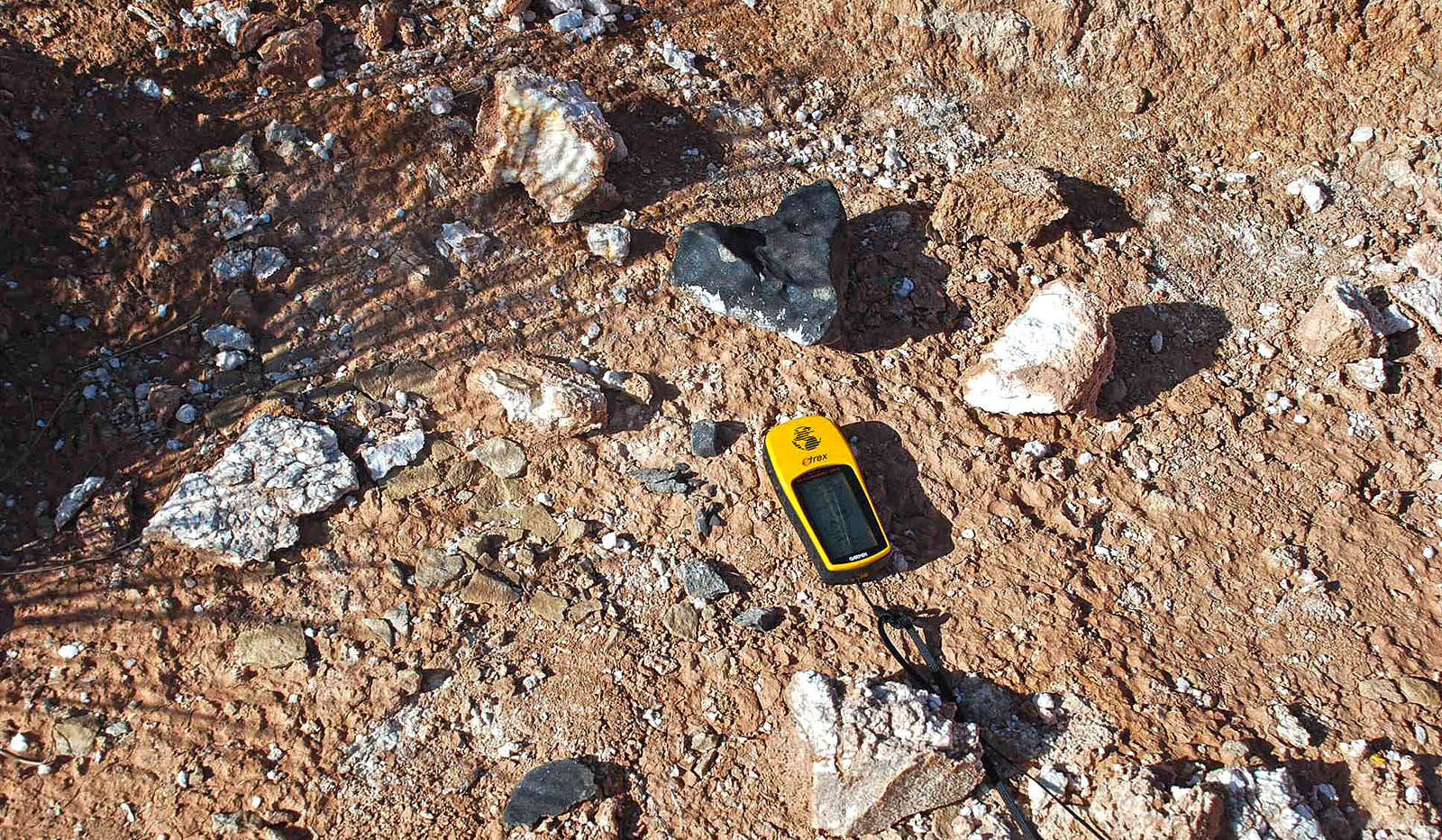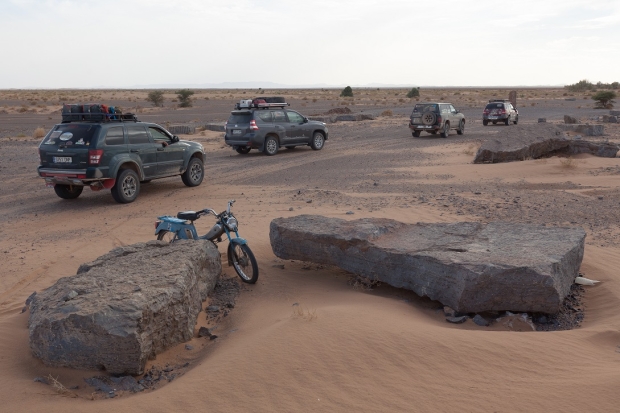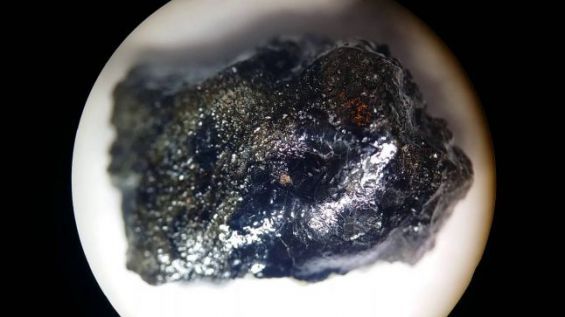It has been raining meteorites in Morocco. The country has been home, throughout the years, to solid pieces coming from outer space and surviving their passage through the atmosphere into our planet. Worldwide, the Kingdom is reputed for being showered by all kinds of meteorites. One of the most primordial finds is the Tissint Martian meteorite. The piece traveling space smashed into the Moroccan soil on the 18th of July, 2011.
Tissint meteorite, the start of a popular culture
It fell in Tata Province in the Guelmim-Es Semara region. The stone named after the Tissint village is the first witnessed Martian meteorite fall in over fifty years. The Tissint meteorite is the oldest known to come from Mars, the red planet. The discovery made of Morocco a heaven for meteorite collectors and sellers.
In an article dedicated to the topic, writer Sandrine Ceurstemont in her trip to Southern Morocco, indicated that the Tata province has been home to several precious finds. «Meteorite hunting is becoming a part of popular culture. It’s common to see local people carrying magnets, since magnetism can be another giveaway, or even metal detectors».

Indeed, the number of meteorites that fell in Morocco had made of the locals hobby a full-time job. The Meteoritical Society, a non-profit scholarly organization founded in 1933 to promote research and education in planetary science with emphasis on studies of meteorites, keeps record of all the shooting stars that hit the Kingdom. Meteorites falls were mainly reported in the Souss-Massa, Oriental, Meknes-Tafilalt and the Guelmim-Es-Semara regions.
Recorded falls
In their database the organization points out that, Martian meteorites were found in Morocco since 2000. Their weight was ranging from 7 kilograms (Tissint) to 7.2 grams and most of them are Shergotty meteorites, igneous rocks of mafic to ultramafic lithology from Mars.
The Martian meteorites continued showing Morocco for years, in 2001, 2003, 2006, 2007, 2008, 2009, 2012, 2013, 2014, 2015 and 2016.
Isli and Tislit lakes and the 100-meter wide meteorite
However, the meteorite falls in Morocco brings us back hundreds of years back, reminding us of the Isli and Tislit twin lakes. Located in Morocco’s Haut Atlas Oriental National Park, the administrative division of Imilchil, the most known version to the story suggests that the lakes were formed from tears of seperated lovers. However, in 2012 and according to a study entitled «Evidence of Non-Impact Catering Origin of Imilchil Lakes (Isli and Taslit)» conducted by a group of scientists from the Hassan II University Casablanca, Faculty of Sciences Aïn Chock, «presence of two impact craters related to the Agoudal iron meteorite find» emerged, another village where meeorites were found.
«These meteorites have been found about 20 km from these lakes», indicated the survey which took place in May 2013.
During her trip to the Guelmim-Es-Semara region writer Sandrine Ceurstemont met with Abderrahmane Ibhi from the Ibn Zohr University in Agadir. The latter who helps locals become meteorite experts and pass on the knowledge in the region, have been convinced that the two lakes were, indeed, impact craters.

«They were formed when an asteroid hurtling towards Earth split in two about 40,000 years ago», he said, adding : «It was over 100 meters wide. It’s the biggest asteroid to fall in Morocco».
However, Ibhi’s version of the story was not backed by the above-mentioned study. According to the group of researchers «no samples of the Agoudal iron meteorite (or any other meteorite) have been found close to the lakes», concluding that the «results of our mapping around the lakes proved that there is no significant rock deformation surrounding the lakes that could be linked with a cataclysmic origin of these two structures».
More meteorites in Southern Morocco
The results of the study and the impact origin of the Isli and Tislit lakes given by Ibhi do not deny the fact that Morocco is a rich meteorites' magnet. For Ceurstemont, «more space rocks have been recovered in Morocco than in other countries, with 95 percent of them coming from around Tata».
She was referring to a study conducted by Abderahmanne Ibhi and entitled «Morocco meteorite falls and finds: some statistics» (2013). He concluded that «since the first recorded discovery of a meteorite in 1937 near the Mrirt village (Khenifra, Morocco), a total of 946 authenticated meteorites have been recorded in Morocco».
He clarified that the rate of recovery of meteorites in Morocco is growing. It «exceeds» according to him the finds that occur in countries «of similar size and range of climatic conditions».
«More than 95 % of documented meteorites from Morocco have been recovered from Eastern Morocco (Eastern Sahara Moroccan) including many rare types. This region has proved to be one of the most prolific areas in the world for meteorite finds».
Providing an update of the recovered meteorites in Morocco, Ibhi said that in 2013, when the study was released online, «a total of 946 (328 achondrites and 618 chondrites) authenticated and distinct meteorites have been recorded».

Giving more details, the researcher pointed out that the finds include 918 stones, 13 irons, and 15 stony-irons. According to him the largest collection of Morocco meteorites is held by the Department of Geology in Ibn Zohr University.
In January, a study conducted by a number of scientists suggested that meteorites that fell in Morocco and Texas, twenty years ago, sparked questions regarding life beyond earth. The survey, published on the 10th of January by Science Advances, is the first chemical study of organic matter «to show organic matter and water in salt crystals found in meteorites on the Earth».





 chargement...
chargement...













